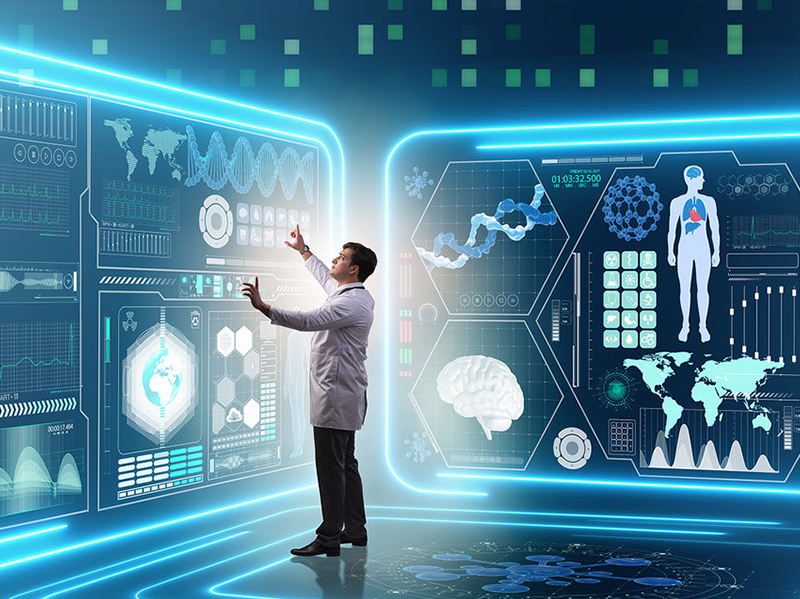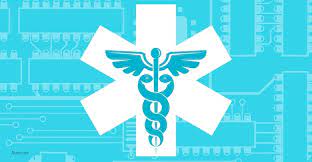Hello!
 The healthcare industry has seen a dramatic transformation thanks to the rapid advancement of technology in the past century.
The healthcare industry has seen a dramatic transformation thanks to the rapid advancement of technology in the past century.
Instead of being treated at psychiatric hospitals equipped with the latest technology and qualified psychiatrists in the 21st century, mental illness has been deemed a crime that could be punished by placing people in “insane asylums”. This was often what led to them going insane. These conditions were thought to be treatable by vomiting and bleeding in the 1600s as a way to “purge” them.
The ever-expanding array of medical options has probably extended the life expectancy of the average person. We also know more about the human body now than ever before. Here are some examples of how recent technological advances have impacted the healthcare industry.
1. Digitalization of Medical Records
No more filling out pages of Times New Roman font paperwork listing every one of your pre-existing conditions.
 The introduction of electronic health records in the 20th century has made it possible to keep track of previous diagnoses, injuries, prescriptions, as well as all details from hospital stays. This is especially useful for patients who are unconscious and need to be admitted to the hospital. It drastically reduces the chance of making a mistake in their treatment.
The introduction of electronic health records in the 20th century has made it possible to keep track of previous diagnoses, injuries, prescriptions, as well as all details from hospital stays. This is especially useful for patients who are unconscious and need to be admitted to the hospital. It drastically reduces the chance of making a mistake in their treatment.
It’s difficult to find a doctor’s office or healthcare provider that doesn’t use an EHR. This is because it’s an integral part of patient care. The sharing of medical records, as with all digitization processes, has made it easier to access, made patient data extremely secure, and relieved a lot of work from secretaries and assistants.
2. Improved Doctor-Patient Communication
Before the internet, patients could only get in touch with their physicians or doctors by phone or by visiting them. Portal technology has ten-fold strengthened those communication links. Patients can access their medical records and test results whenever they are ready. They can also book appointments from anywhere.
 Telemedicine has been a rising star in the healthcare industry, despite hospitals having restricted access to patients for the past two years because of COVID-19 concerns. Although the practice has been around for some time, it was only used for very special occasions. For example, people living in remote areas who couldn’t access a hospital in their city could communicate with top doctors by calling instead.
Telemedicine has been a rising star in the healthcare industry, despite hospitals having restricted access to patients for the past two years because of COVID-19 concerns. Although the practice has been around for some time, it was only used for very special occasions. For example, people living in remote areas who couldn’t access a hospital in their city could communicate with top doctors by calling instead.
The practice is now more accessible. People can chat with qualified doctors and physicians through platforms like live chatting or mobile apps for non-emergency cases.
3. The Internet in All Its Completeness
This is a much larger picture and it’s obvious that the internet was a major catalyst for the many technological advances made in healthcare.
 It is quite amazing to see how many people use the internet to find information about healthcare before going to a doctor. It’s a good moment to remind you that constant stomach pains do not necessarily indicate you have intestinal cancer. A doctor’s appointment is the best alternative.
It is quite amazing to see how many people use the internet to find information about healthcare before going to a doctor. It’s a good moment to remind you that constant stomach pains do not necessarily indicate you have intestinal cancer. A doctor’s appointment is the best alternative.
Healthcare providers are also learning to use social media to their advantage. United Healthcare’s brilliant We Dare You to campaign encouraged users to share one small change in their health.
Conclusion
We have moved on from the days when we had to have lobotomies in order to rewire brain circuits and alleviate suffering. The healthcare industry has made great strides in recent years, so curing incurable diseases will not be an impossible task.
Thank you!
Join us on social networks!
See you!






